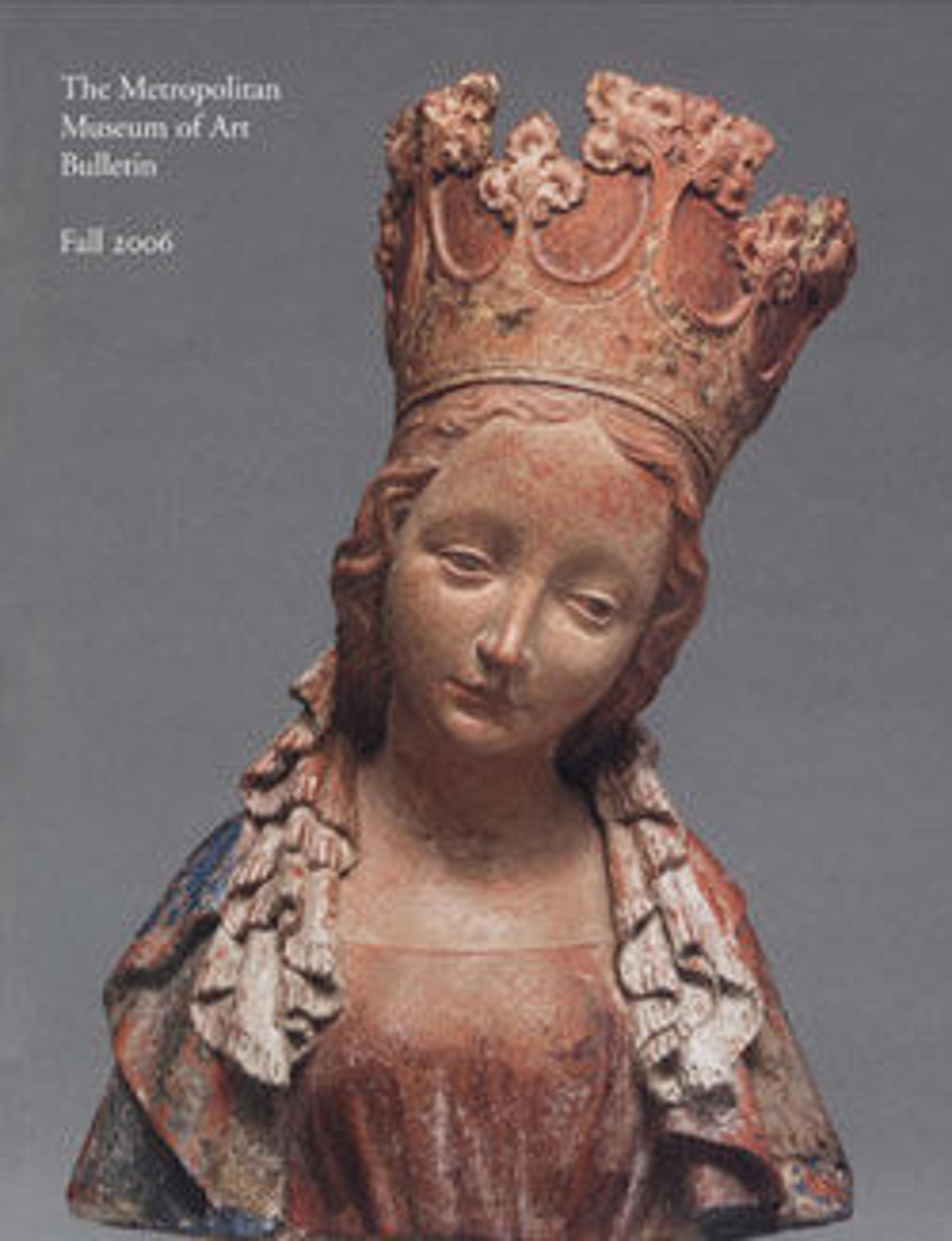Jardinière
The French ceramist Clément Massier began exploring the aesthetic potential of metallic luster glazes due to the influence of Lucien Lévy-Dhurmer, who became Massier's collaborator in 1887. Lévy-Dhurmer was a collector of Hispano-Moresque ceramics, a category of Spanish earthenware decorated with iridescent glazes derived from various metals such as copper, gold, and silver. The influence of these bright, reflective metallic glazes is evident in the works that Lévy-Dhurmer produced in Massier's studio during his nine years of employment there, and Massier continued to explore the effects of luster glazes long after Lévy-Dhurmer's departure in 1896.
The highly organic quality of the jardinière derives from both its irregular shape, which resembles a large gourd, and from its richly patterned luster glaze. The primary decoration consists of scattered copper-red oak leaves silhouetted against a mottled green and beige ground, and the range of iridescent colors achieved by Lévy-Dhurmer creates a sense of depth not found in more conventional glazes. The naturalism of both the form and the decoration and the originality of the conception mark this jardinière as a superb example of Art Nouveau ceramics.
The highly organic quality of the jardinière derives from both its irregular shape, which resembles a large gourd, and from its richly patterned luster glaze. The primary decoration consists of scattered copper-red oak leaves silhouetted against a mottled green and beige ground, and the range of iridescent colors achieved by Lévy-Dhurmer creates a sense of depth not found in more conventional glazes. The naturalism of both the form and the decoration and the originality of the conception mark this jardinière as a superb example of Art Nouveau ceramics.
Artwork Details
- Title: Jardinière
- Maker: Lucien Lévy-Dhurmer (French, Algiers 1865–1953 Le Vésinet)
- Maker: Clément Massier (French, Vallauris 1844–1917 Golfe-Juan)
- Date: ca. 1893–95
- Culture: French, Golfe-Juan
- Medium: Earthenware with metallic glaze
- Dimensions: Overall: 9 1/2 × 14 in. (24.1 × 35.6 cm)
- Classification: Ceramics-Pottery
- Credit Line: Purchase, Funds from various donors, The Charles E. Sampson Memorial Fund, and Jerome M. Cohen and The Isak and Rose Weinman Foundation Inc. Gifts, 2005
- Object Number: 2005.220
- Curatorial Department: European Sculpture and Decorative Arts
More Artwork
Research Resources
The Met provides unparalleled resources for research and welcomes an international community of students and scholars. The Met's Open Access API is where creators and researchers can connect to the The Met collection. Open Access data and public domain images are available for unrestricted commercial and noncommercial use without permission or fee.
To request images under copyright and other restrictions, please use this Image Request form.
Feedback
We continue to research and examine historical and cultural context for objects in The Met collection. If you have comments or questions about this object record, please contact us using the form below. The Museum looks forward to receiving your comments.
